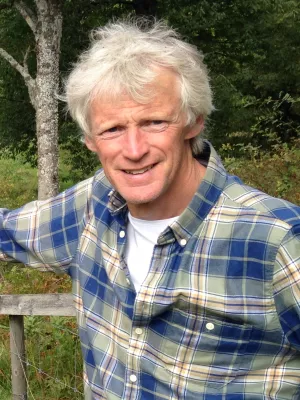
Tomas Germundsson
Professor emeritus

Att skapa plats och göra rum : Landskapsperspektiv på det historiska värdets betydelse och funktion i svensk planering och miljövård
Author
Summary, in English
The analysis takes its theoretical point of departure in time-geography and critical realism. These perspectives have been used to develop a realist landscape ontology. As a result, this thesis proposes a landscape ontology based on three structural levels: the viewscape, landscape as a social and material outcome, and the flowscape. In relation to this model I also outline how the concepts of discourse and aesthetics may be used to develop the analytical perspectives of time-geography. A method for historic landscape analysis based on the application of stratigraphy diagrams within archeology is also presented. In contrast to the traditional application of the method, this modified version has the potential to include other historical sources, such as historical maps, aerial photography and written sources.
The empirical foundation for the thesis consists of seven case studies of actual places being subjected to various planning and conservation acts. The single cases vary from single ancient monuments (Swe: “fornlämningar”) to larger nature and heritage conservation areas, as well as planning projects. Three themes are further explored in order to clarify the structural relations within the planning system: the prerequisites of the designation in the modern planning, how various landscape phenomena are turned into landscape values through different acts of designation and the role of the designation in the planning system. Finally, a critique of contemporary heritage politics based on an analysis of the Swedish Heritages development program Agenda Heritage and the European Landscape Convention is also presented, both being interpreted as expressions of a postmodern planning discourse.
Based on the theoretical foundation of the thesis, I find that there is a need for a double critique of the current directions in contemporary planning and conservation, concerning both the atomistic perspectives of modern planning and the moral arguments of its postmodern counterpart. As a conclusion, it is suggested that, rather than focusing on ‘where’ or ‘by whom’, planning and conservation must engage in the questions of ‘how’ various planning acts shall be carried out. If we really do care about the landscape we must also be prepared to act accordingly.
Department/s
- Department of Human Geography
Publishing year
2013
Language
Swedish
Publication/Series
Meddelande från Institutionen för kulturgeografi och ekonomisk geografi. Avhandlingar
Volume
9
Full text
- Available as PDF - 33 MB
- Download statistics
Document type
Dissertation
Publisher
Institutionen för kulturgeografi och ekonomisk geografi, Lunds universitet
Topic
- Human Geography
Keywords
- conservation
- critical realism
- discourse
- heritage
- landscape
- ontology
- planning
- sustainability
- time geography
Status
Published
Supervisor
- Tomas Germundsson
ISBN/ISSN/Other
- ISBN: 978-91-7473-688-5
- ISBN: 978-91-7473-687-8
Defence date
16 November 2013
Defence time
13:00
Defence place
Sal 111 (Världen), Geocentrum I, Sölvegatan 10, Lund
Opponent
- Klas Sandell (Professor)

